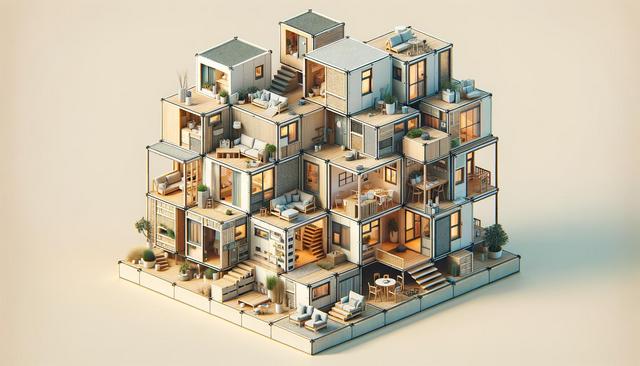Efficient Modular Living: Designing Comfortable Spaces for Seniors with Multi-Room Flexibility
Explore the practicality and customization of modular homes tailored for seniors, offering a variety of room configurations to enhance efficient living. This guide will walk you through the benefits and possibilities of adapting modular homes to fit the unique needs of the aging population.

Understanding Modular Homes for Seniors
Modular homes present a unique opportunity for seniors seeking adaptable and comfortable living arrangements. Unlike traditional homes, these construction models are highly customizable, allowing for creative design solutions that cater to the specific needs of the aging population. The modular approach involves prefabricated sections that are transported and assembled on-site, ensuring a quicker and more efficient building process. This flexibility in design not only accelerates the timeline from conception to move-in but also allows homeowners to personalize the space to suit their preferences and requirements.
Benefits of Multi-Room Flexibility
For seniors, the ability to modify and adapt their living spaces is crucial as their needs evolve over time. Modular homes offer an exceptional degree of multi-room flexibility, providing options that can be tailored to individual preferences. This can include:
- Extra rooms for caregivers or visiting family
- Adaptable spaces that can transition from guest rooms to home offices
- Open layout designs for ease of movement
Furthermore, as mobility becomes a consideration, these homes can be outfitted with features such as wider doorways and ramps, ensuring a safe and accessible environment for all residents.
Designing for Comfort and Efficiency
Comfort and efficiency are at the heart of modular home design for seniors. The layout of these homes can be customized to include features like energy-efficient heating and cooling systems, strategically placed windows for natural light, and sustainable materials that promote a healthy living environment. Designers often work closely with clients to ensure that every aspect of the home contributes to a comfortable and efficient lifestyle. For instance, integrating smart technology can enhance convenience, allowing seniors to control lighting, security, and temperature with ease.
Practical Considerations for Aging in Place
As seniors plan for their future, the concept of aging in place becomes increasingly important. Modular homes offer practical solutions that support this goal by incorporating design elements that anticipate future needs. This might involve:
- Bathroom modifications with walk-in showers and grab bars
- Non-slip flooring throughout the home
- Low-maintenance exteriors to reduce upkeep
These thoughtful considerations help seniors maintain independence and remain in their homes longer, providing peace of mind for both residents and their families.
Adapting to Changing Needs
The adaptability of modular homes is one of their most compelling features. As seniors’ needs change, these homes can be easily modified or expanded without the need for extensive renovations. This capability ensures that the living environment remains supportive and functional. Whether it’s converting a spare room into a hobby space or adding assistive technology, modular homes can evolve alongside their residents, offering a lasting solution that adjusts over time.
Conclusion
Modular homes offer a versatile and economical option for seniors looking to enhance their living spaces with comfort and adaptability in mind. By prioritizing multi-room flexibility and sustainable, efficient design, these homes meet the unique needs of the aging population, providing a practical foundation for a secure and enjoyable living experience. As seniors plan for the future, modular homes stand out as a highly rated choice, offering the promise of a home that grows and changes with its residents.